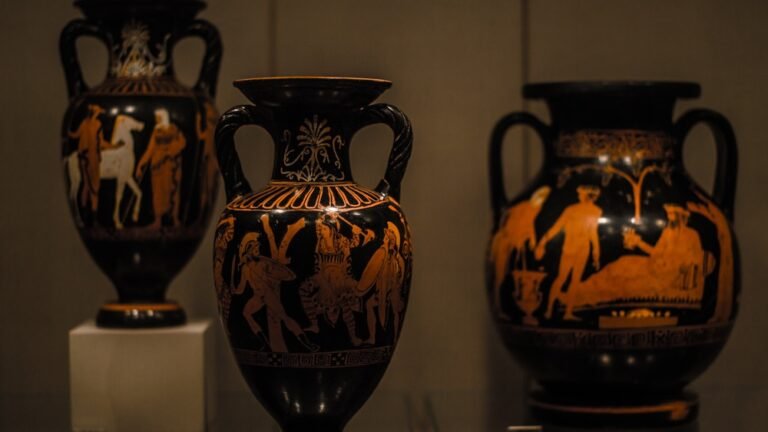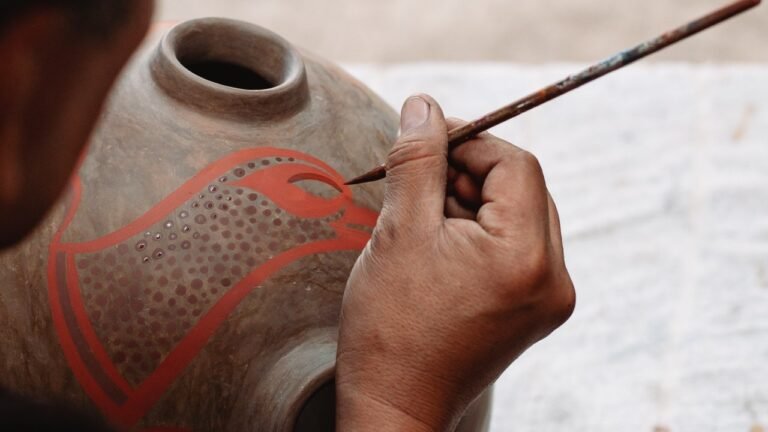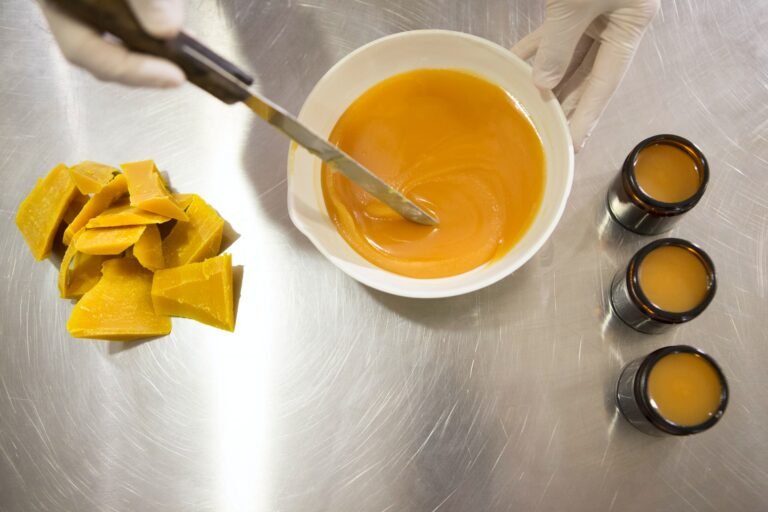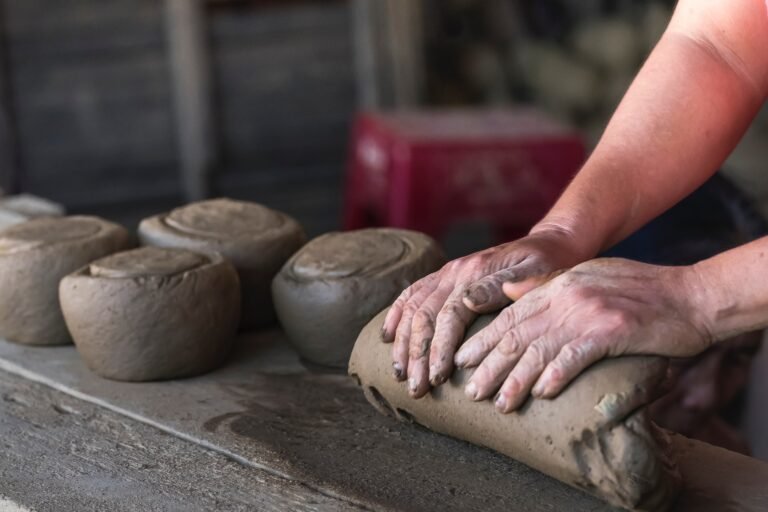What Is A Cross Draft Kiln? Explained
Working with clay, you must have come across unusual names for equipment. One of the most important things to bake your art and make it permanent is a kiln. But what are the types of kilns and especially what is a cross draft kiln?
A cross draft kiln is a type of ceramic kiln that uses more than one type of fuel source. A cross draft kiln was initially been invented to create “fast firing,” which refers to the firing of large amounts of ceramics in a short period of time.
It was first invented in the 1950s by two professors at the University of Iowa. More recently, artists have begun building cross-draft kilns to fire ceramic pieces. They are helpful in firing large, labor-intensive ceramic pieces such as sculptures because they can fire larger pieces more quickly when compared to other types of kilns.
A cross-draft kiln has three chambers that are separated by two partitions. One of these chambers will be heated with gas burners, the other will be heated with wood, and the third chamber runs through a coil of silica glass tubing. This third chamber is connected to both rooms, thereby creating a draft that circulates hot gases from one section to the next, using gravity as its energy source.
The heating process continues in this way without any fan or forced air. The basic principle of the cross draft kiln is that a piece of clay is placed in the first chamber, where it will be fired. Then, when it reaches the recommended firing temperature, it will be moved to the second chamber, where wood heaters will fire it.
Finally, when it cools off from the firing process, it will go back to the first chamber to cool down before being removed from the kiln and finished. Since the cross draft kiln is designed to fire a variety of pieces and different types of materials all at the same time, it is an ideal piece of equipment for ceramists and other artists.
How Does A Cross Draft Kiln Work?
A cross draft kiln consists of a circular metal firing chamber with multiple openings. The opening consists of two vents on the bottom of the kiln that is used to provide oxygen to the fuel source and two vents at the top of the kiln used to draw out waste gases. The bottom vents are known as “inlets”, and they consist of an air inlet pipe that draws in outside air and a pilot burner which is used to create a source of heat for the clay piece.
The two vents at the top of the kiln are known as “outlets” and develop a source of heat that burns the clay piece.
Cross draft kilns are used in the ceramic firing industry to heat a ceramic object for the firing process. A modern cross draft kiln consists of an electric heating element and an iron or copper heating coil, along with walls that are either refractory brick or masonry, sandstone, or limestone. When fired, exhaust gases from combustion flow through these walls.
Cross draft kilns can also be used for experiments that duplicate the firing process of other types of kilns. A cross draft kiln is helpful for manufacturing larger ceramic pieces because it allows for much faster firing times relative to different types of ceramic kilns. For an artist to achieve the best possible results, they must understand the firing process.

What Are The Two Types Of Kilns?
Here are two types of kilns: “nearly-closed” and “open-air” kilns. Each type of kiln has its advantages and disadvantages.
1. Nearly closed or hybrid ceramic kiln
A nearly closed kiln is a type of ceramic firing chamber that utilizes a combination of air and fuel to create the proper temperatures for the firing process. Nearly closed kilns are used to fire clay artwork, and they also tend to be the most economical option for artisans. However, there are disadvantages to this type of kiln.
Nearly closed kilns tend to create a lot of smoke during the firing process, and they also take up more space than open-air kilns. Thus, nearly closed ceramic kilns are best used by artisans that plan on firing smaller quantities of ceramics such as pots, vases, cups, bowls, and plates.
2. Open-air kilns
An open-air firing chamber is the type of kiln that most artisans use when firing ceramics. An open-air kiln is primarily used for wood firing. It consists of a wooden chamber, where the fuel source is placed. It differs from nearly-closed kilns because it includes a vent that allows outside air into the chamber.
Open-air kilns produce a much hotter fire and more variable than nearly-closed kilns, which makes them better for wood firing and other types of firing. In addition, open-air kilns are more prominent than nearly closed kilns, and they create a lot less smoke during the firing process. The most notable advantage to this type of kiln is that open-air ceramic firing chambers provide an even distribution of heat across the entire ceramic piece, resulting in evenly fired pieces.
OA kilns are not typically used to fire artworks, but they are often utilized by artisans experimenting with new ceramic designs. While it is not a requirement that an artist uses a closed or open-air ceramic kiln, it does depend on the firing process that the artist wishes to use.
What Is An Updraft Kiln?
An updraft ceramic kiln is a type of kiln that uses gas to heat the chambers and distribute the heat into the firing chamber. A gas feeder distributes air to the gas burner, which creates a flame. The heated air moves from the burner through a manifold, which distributes the heated air into each chamber and then spreads out across each chamber.
The heated air then travels through pipes, which carry the hot air to and into the ceramic piece. Because there is a continuous stream of heated air that is elevated from the base of each chamber, an updraft kiln is capable of firing ceramics up to about 18 feet above the floor. This is especially important if the artist or gardener wants to fire taller or more depth pieces.
In addition, the sides and top of the firing chamber are usually made out of high heat-resistant materials, such as refractory bricks. This allows for the heated air to flow into the kiln without being obstructed.
What Is The Difference Between The Flame Kiln And Flare Kiln?
The flame kiln is a type of kiln that uses oxygen for firing. It is often used to fire ceramic or stoneware clay in the US. It can be a gas-fired or electric-fired kiln. The flames burn at up to 2500 degrees Fahrenheit and allow for higher temperature firings than the oxidation (kilns also commonly referred to as oxidation kilns) and reduction (kilns also widely referred to as reduction kilns) processes combined.
The flare is actually on the top of the firing chamber. Therefore, the flare can be either controlled or not. The flare is a space that is slightly wider than the remainder of the firing chamber. It surrounds the pipes where the molten material flows through and allows oxygen to enter at a certain point in time during the firing process. The tunnel of air, which is contained within the flare, hatches holes in the plastic walls allowing oxygen to enter.
A flare kiln is a multi-ring gas or oil-fired kiln. It consists of an outer ring that spins around and an inner ring that is fixed in place. Both rings are made out of refractory brick, which allows for the heated air to pass through the kiln, and for the ceramic piece to absorb the heat. There is usually a gas or oil burner in the middle of each ring, which heats the air. The fired ceramic work produced is then transported through a pipe that runs through the center of the kiln.
The main difference is that flame kilns are built in a different vast chamber, so it needs more fuel to heat the items. In addition, when burning a flame kiln, it needs to burn some kind of fuel to strengthen the temperature inside the chamber. Whereas flare kiln needs only burn through gas supply to heat things inside, it saves you lots of fuel costs. The main advantage of using a flare kiln is that it can fire ceramic pieces quickly and cheaply. It also makes it easier to produce multiple layers of colors, which is desirable for artists.







